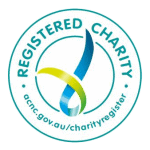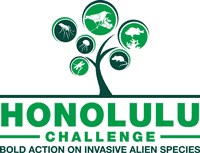The Invasive Species Council was formed in 2002 to seek stronger laws, policies and programs to keep Australian biodiversity safe from weeds, feral animals and other invaders. Our focus is on prevention and early action.
Structure
The Invasive Species Council is a not-for-profit charitable organisation with a board, about 200 members and over 40,000 supporters. The organisation is incorporated in Victoria (incorporation number A0042746C) and registered with the Australian government as a charitable institution and a tax-deductible gift recipient.
We are registered with the Australian Charities and Not-for-profits Commission. Click on the registered charities tick (right) to view our listing on the Charity Register.
Affiliations
The Invasive Species Council is part of numerous environment, biosecurity and agricultural networks. It supports land managers, environmental and community interests and many others with aligned objectives seeking to reduce the impacts of invasive species.
The Invasive Species Council is a member of the Pacific Invasives Partnership, the Places You Love Alliance, Australian Committee of the IUCN, Australian Wildlife Management Society, the Australian Association of Bush Regenerators, the Weed Society of Victoria, the Nature Conservation Council of NSW, the Queensland Conservation Council, the North Queensland Conservation Council, the Cairns and Far North Environment Centre and the Conservation Council ACT Region. We are an associate member of the Centre for Invasive Species Solutions and an affiliate of the Department of Ecology, Evolution and Environment, LaTrobe University.
We are a founding member of the Honolulu Challenge, a global call for greater action on addressing invasive alien species to protect biodiversity and human wellbeing from their impacts. The Honolulu Challenge on Invasive Alien Species was launched at the 2016 IUCN World Conservation Congress in Honolulu.
The Invasive Species Council is part of the biosecurity collective, a partnership with Animal Health Australia, Plant Health Australia and the Centre for Invasive Species Solutions. We jointly support a five-point Biosecurity 2030 agenda and co-host the Australian Biosecurity Symposium. The Invasive Species Council chairs the steering group of the Decade of Biosecurity initiative.
In 2021 we joined the Darwin Agreement, a collaboration between Australasian environmental organisations to support the UN Decade on Ecosystem Restoration.
We are co-founder and host of Reclaim Kosci, a broad consortium of individuals and organisations that love Kosciuszko National Park and seek to protect it from the impacts of feral horses.
Funding
Our work is funded by donations and grants from our supporters. We receive no ongoing government grants. Occasionally we may receive a small proportion of funds for our expert advice to government on a fee for service basis and fixed project grants. These funds make up between 0 and 10% of our income in any one year.
We are grateful for the generous support of the many individuals, trusts and foundations that make our work possible.
We particularly appreciate the significant ongoing support from The Ian Potter Foundation, the Australian Communities Foundation and its sub-funds, The Purves Environmental Foundation, the Mullum Trust, the Garry White Foundation, Lord Mayor’s Charitable Foundation, Paddy Pallin Foundation, and The Ross Trust.
We are extremely grateful for the in-kind support provided by the Royal Society of Victoria and pro bono work by Frontier Economics.
Electoral comment
Responsibility for electoral comment in Australia is by Andrew Cox, S305-60 Leicester St, Carlton Vic 3053. Comments are made on behalf of the Invasive Species Council Inc. ABN 27 101 522 829.








